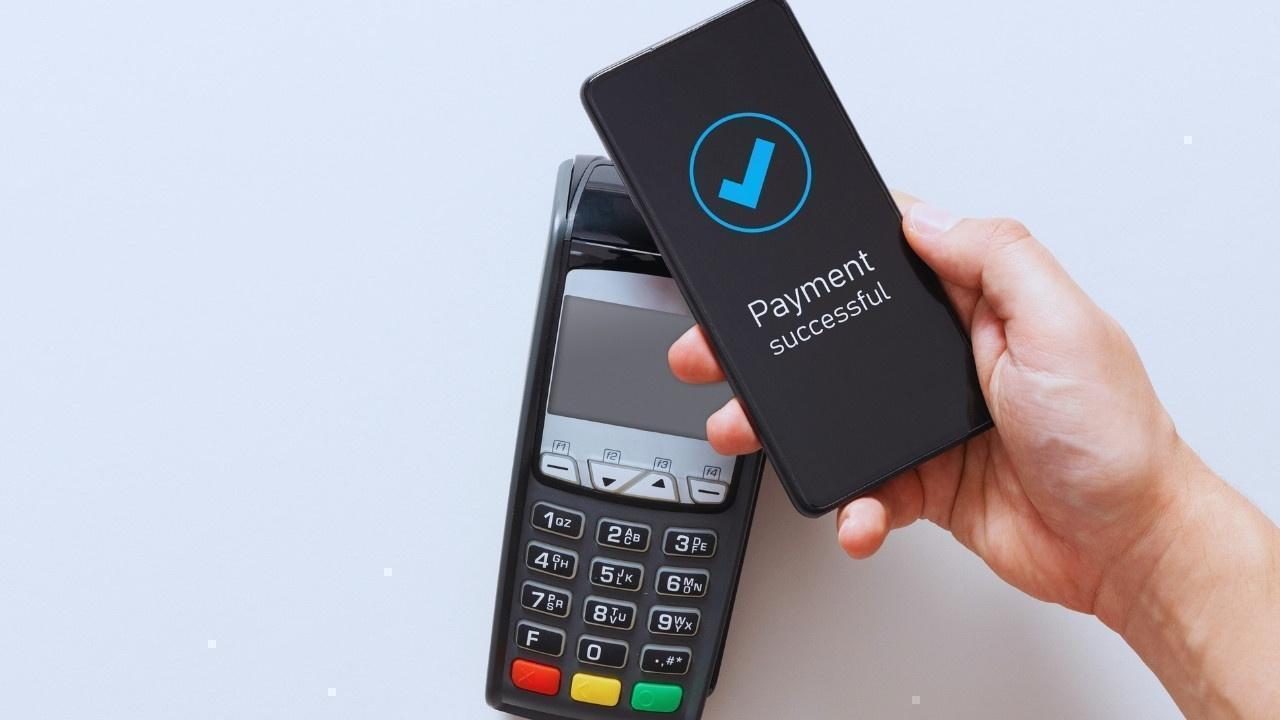
Join 10k+ people to get notified about new posts, news and tips.
Do not worry we don't spam!

Post by : Anis Farhan
This week, a prominent mobile payment application announced a critical security patch, urging users to apply it immediately. At first glance, this update might appear as just another routine enhancement; however, the underlying issues reveal significant threats that users need to acknowledge. In essence, the patch addresses vulnerabilities that could enable malicious actors to intercept transactions, hijack sessions, exploit weaknesses within devices, or access sensitive information stored in the payment app. Due to the substantial risks to financial security, personal data, and device safety, users are strongly advised to update right away.
For individuals using payment apps for various transactions—be it peer-to-peer transfers, merchant payments, bill payments, or digital wallets—this alert serves as an essential reminder of potential security threats. This article delves into the reasons necessitating the update, its implications, and crucial steps beyond merely hitting the “update” button.
Several factors led to this prompt action from the payment-app provider:
The app's developers uncovered flaws surrounding transaction request authentication and improper management of session tokens. Exploiters could potentially spoof payment sessions, adjust transaction amounts, or redirect transfers.
Additionally, the patch rectifies various issues at the operating system level which compromise the app's security—such as privilege escalation, unverified device states, or unsafe key storage. An attacker taking control of an affected device could operate the payment app with increased ease.
Security experts have reported ongoing attacks targeting certain versions of the app and its supporting libraries. This raised the stakes, prompting the provider to leap from standard updates to an emergency patch.
Considering the monetary nature of payment apps, along with issues of identity security and regulatory compliance, the provider likely faced immense pressure to act quickly. A data breach could result in extensive user losses, harm to reputation, and regulatory backlash.
With users on both Android and iOS, various older devices, and differing configurations, the app's vulnerabilities were significant. The patch was designed to standardize protections across all user devices.
Ultimately, the convergence of app-level flaws, device-side vulnerabilities, and real-world threats reached a critical threshold that necessitated the provider's urgent update directive.
For daily users, the risks associated with delaying this update elevate it from a mere option to a necessity.
Exploiting transaction-authentication flaws could result in unauthorized funds being transferred, or worse, tricking users into sending money to the wrong account.
Payment applications store sensitive information such as banking details, transaction records, and personal data. Attackers could exploit vulnerabilities to access this data.
If your device has weak security (e.g., outdated OS, rooted, lacking essential patches), the app's protective features may be compromised. Ignoring updates could leave you wide open to attacks.
Many users connect payment applications to other services like shopping, utilities, and subscriptions. A compromise in the app could lead to vulnerabilities in your broader digital ecosystem.
Recovering after fraud can be slow—banks, regulators, and vendors require time to investigate incidents. Preventative updates are much easier than remediation efforts.
Given this increase in risk, timely installation of the security patch stands as your best line of defense.
Updating the app is just the first action—you also need to ensure your security settings are optimized.
Check in your app store or device settings to validate that your payment app version aligns with the provider’s update note. If discrepancies arise, update it manually.
Access your device settings to verify the current OS version and security-patch date. If it’s lagging, prioritize a comprehensive device update.
Check the permissions granted to the app: access to contacts, SMS, and device management. Revoke any permissions you don’t deem necessary.
Examine recent transactions within the payment app. Immediately report any unfamiliar payments and check linked accounts.
Activate any supported MFA options like PINs, biometrics, or device binding. MFA provides an additional security layer even after the patch.
Ensure account re-registration requires verification, and enable device security features like strong screen locks and remote wipe.
Rooted Android devices or jailbroken iOS devices face increased risk. If your device is in this state, you might consider reverting to an official version or using the app cautiously.
Always update through the official app store (Google Play/Apple App Store) and disregard email/SMS prompts claiming urgent updates. Fraudsters often mimic these messages.
Most apps allow you to review active devices connected to your account. Log out any unknown devices.
These precautionary measures will help transform a routine update into a significant enhancement of your security.
While the update fortifies your app's security, your behavior is equally significant.
On unsecured networks, attackers can easily intercept data. Stick to cellular data or secure Wi-Fi connections instead.
This update serves as a crucial reminder; procrastinating on OS and security updates can lead to significant vulnerabilities.
Malicious applications can jeopardize device security and undermine the effectiveness of your payment app.
Devices in these states often bypass essential security measures, putting you at greater risk.
Limit the number of linked accounts. Remove any that are no longer used.
Using the same password can expose you to additional risk if one service is compromised.
By adopting these mindful security practices, you can mitigate risks beyond the patch.
The payment app provider generally takes several technical and operational steps following the urgent patch.
Providers may implement forced updates—restricting app functions until users comply with the latest update. This approach encourages rapid adaptation.
Authentication and session tokens might be invalidated or regenerated after updates to obstruct the reuse of compromised tokens.
Beyond securing data in transit, the update may also enhance protection over stored data and key management solutions.
The app may enforce checks on device integrity (such as recognizing rooted/jailbroken statuses) and limit access accordingly.
Enhanced behavioral analytics could help detect unusual activities, like multiple rapid transactions or logins from new devices.
These measures aim to bolster user security across the platform.
With an increasing number of transactions shifting to mobile platforms, the attack landscape is expanding. Mobile payments are particularly booming in regions like India and other global markets.
Cybercriminals are shifting focus towards mobile payment infrastructures, taking advantage of vulnerabilities in devices and applications, often yielding high rewards with minimal effort.
Payment apps are facing heightened regulatory oversight due to fraud, money-laundering concerns, and consumer protection laws. One significant breach can severely undermine user trust.
Given that payment apps often interface with various services—including e-commerce, utility payments, and banking—breaches can have a cascading effect on multiple platforms.
With many users operating older models, modified devices, or delayed updates, payment apps are tasked with defending against inconsistent security levels.
Thus, the recent patch isn't merely a response to a single app; rather, it mirrors the evolving dynamics of threats within mobile finance.
Launch your payment application and check for available updates; if present, download it right away.
After updating, restart your device to refresh all components.
Access device settings to confirm the OS version and the date of the latest security updates; if outdated, schedule a comprehensive device upgrade.
Within the payment app settings, ensure you review:
linked bank accounts/cards
transaction history
active logins/devices
multi-factor authentication enabled
settings for trusted-device identification
Assess app permissions—revoke any that are unnecessary for the app's functionalities (e.g., remove SMS access if it isn't required).
Exercise caution with major transactions over public Wi-Fi; prefer mobile data or secured networks instead.
If not already in place, set a strong screen lock on your device (PIN, biometric).
Activate notifications for transaction activities in the payment app so that you receive immediate alerts for any unusual account activity.
Should you have utilized a rooted or jailbroken device, consider unlinking the payment app or using it exclusively on a secure device going forward.
Remain alert for phishing attempts; any prompts to update via SMS or email should be disregarded—always opt for updates through the official store.
Executing these steps will substantially decrease your risk and ensure you reap the full benefits of the security patch.
The urgent security patch for this payment app is a pivotal reminder that safety in mobile finance hinges on both timely updates and vigilant user behavior. The update addresses critical vulnerabilities—like transaction spoofing, session hijacking, and device-level risks—and delays may result in severe repercussions.
By acting swiftly to install the patch, evaluating device security, refining account settings, and adjusting usage patterns (especially on public networks and older devices), you can regain control over your digital payment safety. The threat landscape is evolving rapidly, but with a proactive approach and a solid checklist, you can safeguard your finances, data, and trust in mobile payments.
Think of this patch as essential, not optional. It's a critical juncture for enhancing your financial security in a mobile world.
This article is intended for informational purposes and does not provide financial, technical, or legal advice. Users should consult their payment app provider's security notices, device manufacturer updates, and seek professional assistance if they suspect their account or device has been compromised.










Conway Shines as New Zealand Edges Out West Indies in Napier
Devon Conway and Rachin Ravindra propel New Zealand to a five-wicket victory over West Indies, clinc

Ja'Marr Chase Faces One-Game Suspension Following Spitting Incident
Bengals' Ja'Marr Chase receives a one-game suspension after spitting on Jalen Ramsey; his appeal has

England Names 12-Man Squad for Opening Ashes Test in Perth
England reveals a 12-man squad for the first Ashes Test in Perth, featuring Shoaib Bashir and a pace

Roger Federer Inducted into Tennis Hall of Fame in Historic First Year
Tennis icon Roger Federer receives Hall of Fame recognition in his first year, alongside renowned co

Steve McClaren Steps Down as Jamaica’s Head Coach Following World Cup Qualifying Draw
After a crucial goalless draw with Curacao, Steve McClaren resigns as Jamaica's head coach, leaving

Daryl Mitchell Tops ICC ODI Rankings, Updates Released
Daryl Mitchell ascends to No.1 in the ICC ODI rankings, with boosts for players from New Zealand, In